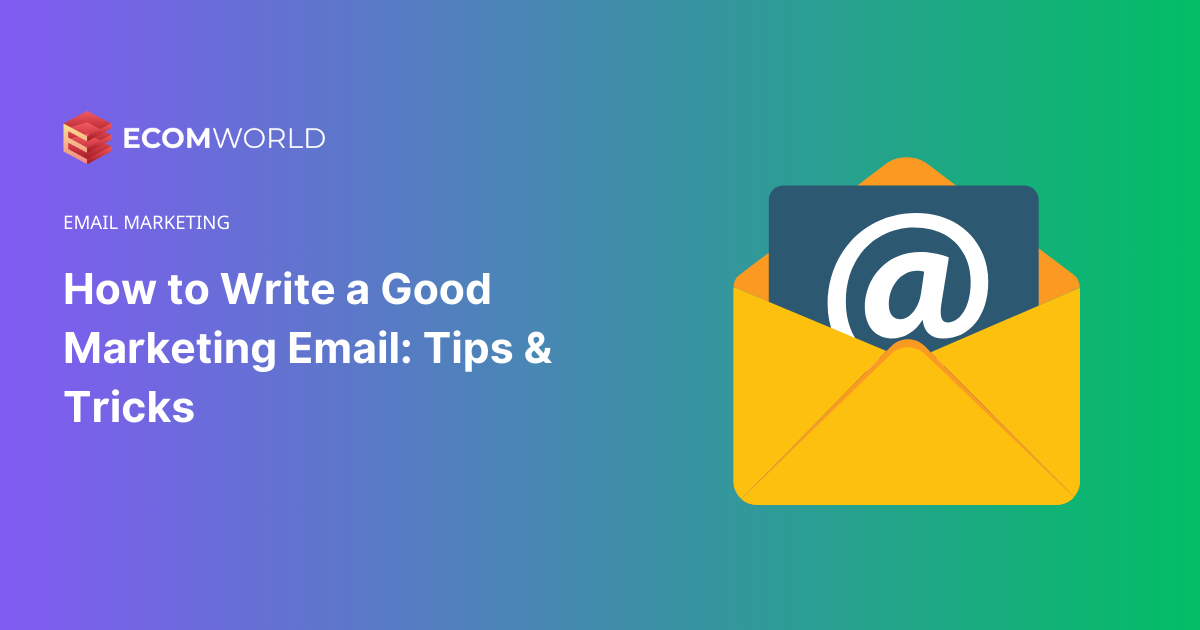Secret To Writing A Good Marketing Email
Sending a marketing email differs from a regular email in several ways.
In a marketing email, you’re not solely sharing information; you’re aiming to generate engagement that serves your business objectives. You seek to prompt specific actions without coming across as overly assertive, thus maintaining a positive relationship with your subscribers.
Making A Good Marketing Email
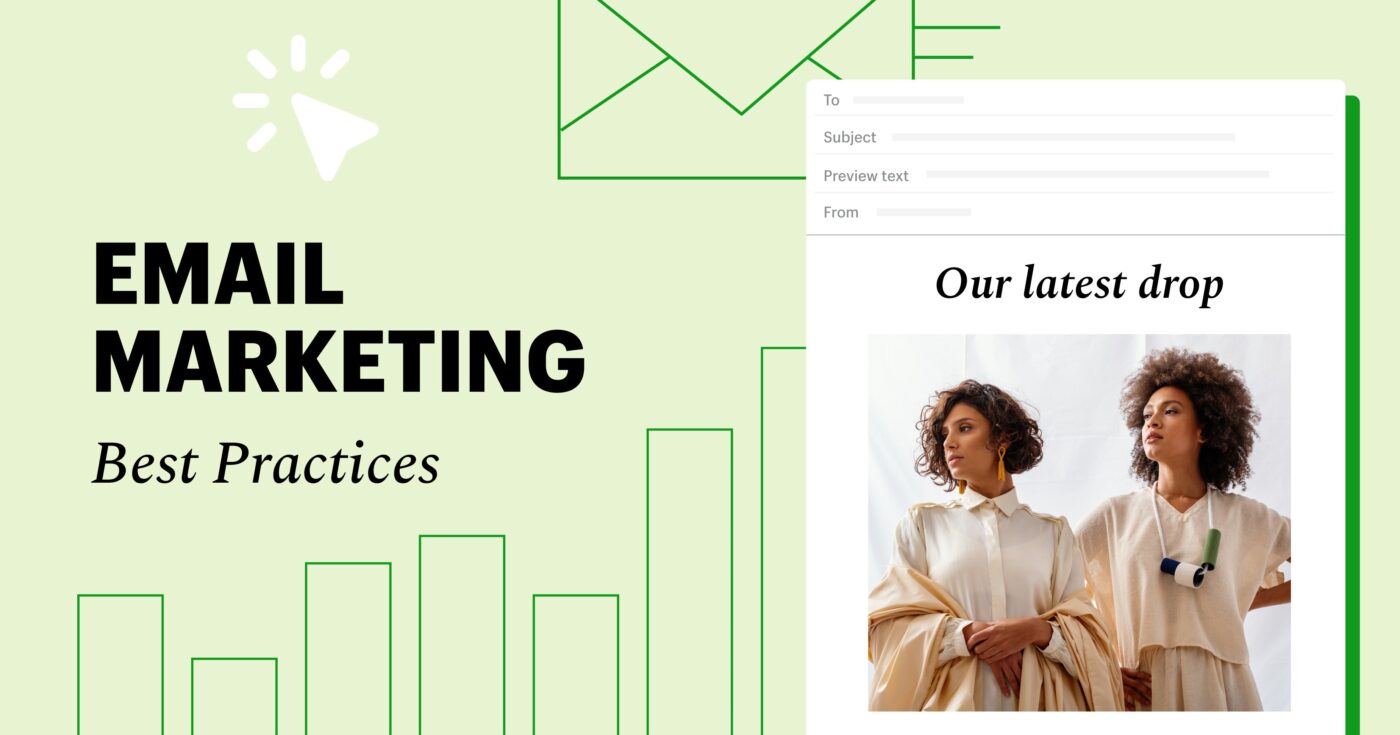
Tips For Writing A Subject Line
Ones that make the recipient curious
Strive to craft subject lines that spark curiosity and intrigue. This involves steering clear of generic terms such as “newsletter” or “update” and instead opting for specific and captivating phrases that pique recipients’ interest and leave them wanting to discover more.
For instance, consider utilizing subject lines like “Get to the finish line” or “3 ways your donation can save lives.” These types of subject lines offer a specific and intriguing glimpse into the content of the email, enticing recipients to open and delve deeper into the message.
Personalized subject lines
Incorporating personalized subject lines into emails is an effective method to create a sense of personalization. This approach has been shown to boost open rates by 26% and reduce the occurrence of bounced emails during mail delivery.
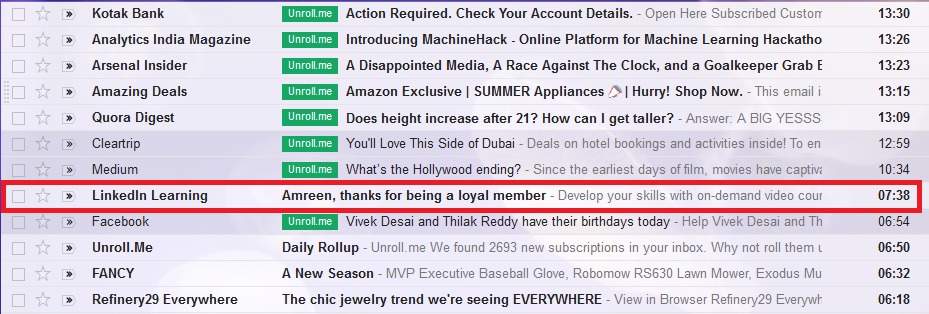
For instance, include the recipient’s name in the subject line, such as “Adam, where have you been? We miss you!” adds a personal touch that captures attention and encourages recipients to open the email. This level of personalization enhances engagement and fosters a stronger connection with the audience.
Humorous subject lines
Crafting a well-written and cleverly humorous subject line can set your email apart in a crowded inbox. However, it’s important to strike a balance and avoid going overboard, as excessive humor can be perceived as unprofessional.
For instance, consider a subject line like “Ah! The chickens have finally come to roost!” This example demonstrates a simple yet comical approach that can effectively grab attention. Humorous subject lines have the potential to be attention-grabbing assets that help your email stand out from the rest.
Announcement subject lines
When you have significant news to communicate, it is crucial to ensure that your subject line accurately conveys the importance of the message. Subject lines like “Announcing our newest product!” or “We’re hiring!” serve as excellent examples of announcement subject lines that effectively capture attention.
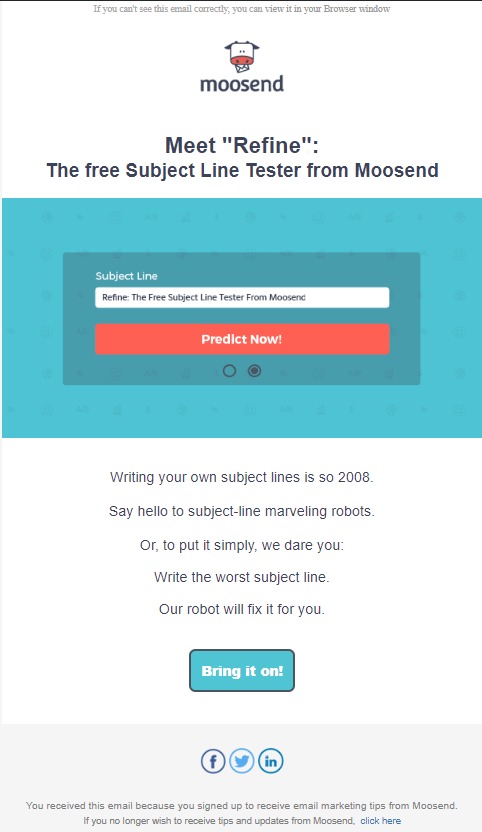
Shocking subject lines
Using a surprising or unexpected subject line is an effective way to entice recipients to open your email. However, it is crucial to ensure that the content inside the email lives up to the anticipation created by the subject line.

For instance, a subject line such as “Rachel, you won’t believe what just happened!” can generate intrigue and curiosity, giving interested recipients the impression that something noteworthy is taking place. By delivering compelling content that matches the excitement generated by the subject line, you can effectively engage and captivate your audience.
Align your subject line and email copy
You might already know how crucial it is for your call-to-action (CTA) copy and your landing page offer to align. Well, it’s no different when crafting your email subject line and email message.
47% of marketers say they test different email subject lines to optimize their emails‘ performance. That’s why it’s so important to craft subject lines that are compelling enough to get people to click through.
This also means that whatever your email subject line promises, the email message should be delivered.
Why?
It‘s not just because it’s responsible; it‘s also because when readers don’t get what they’re actually promised in the subject line, click-through rates plummet.
(And, in the long term, so will your email open rates.) A high email open rate means nothing without any click-throughs.
Take advantage of the preheader text
The preheader text is like a second subject line. It gives you an additional chance to entice the reader to open your email. Use this to your advantage, especially when it comes to increasing your mobile open rates.
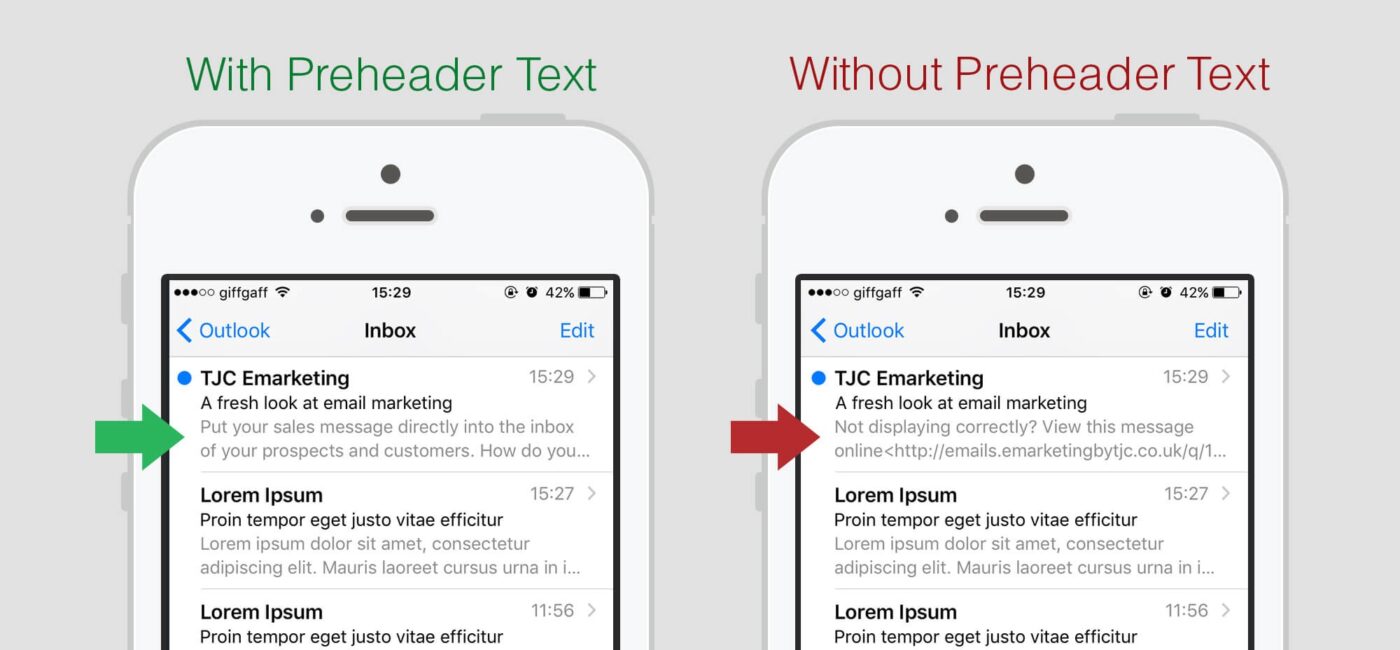
Tips For Writing An Email
Keep content clear and concise
Picture, Paragraph, Call to Action. The best emails have a clear focus and are designed to encourage a single action from the reader. Clear, concise content also makes it easier to read your emails.
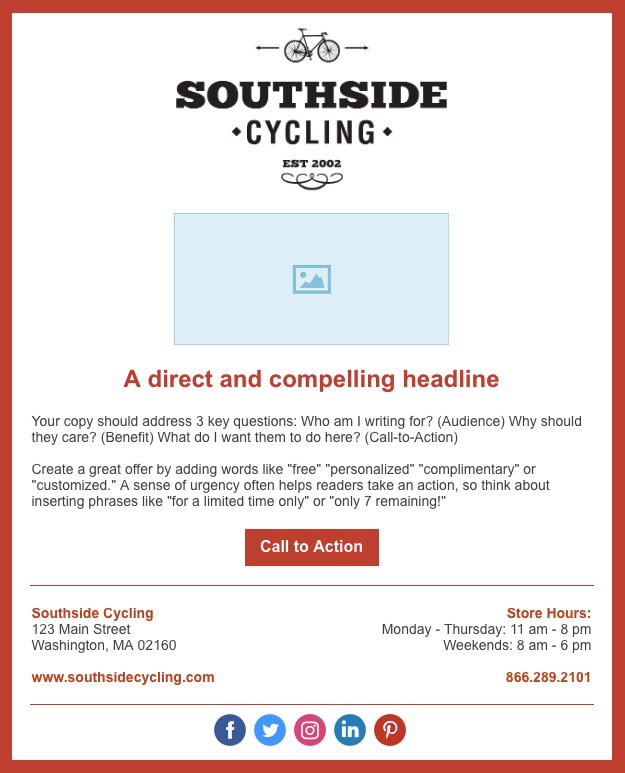
Helpful Information
Remove anything that veers from the action you want the reader to take. Doing so helps you get to the best length for your email newsletter. If it’s not helping your reader take the desired action, it’s a distraction. Remove it.
You know the value of your email. But does your recipient? No, not yet. And it’s your job to explain it.
The problem is that many emails only explain the feature they are offering, not the benefit. Look at the copy in two separate e-commerce emails I received.
Which one is touting the feature, and which is touting the benefit?

Send More Than One Email
While it would be ideal if a single email could achieve the desired results, the reality is that people lead busy lives, and your business may not be their foremost concern. It’s not that individuals lack the intention to take action; it’s simply that distractions are prevalent.
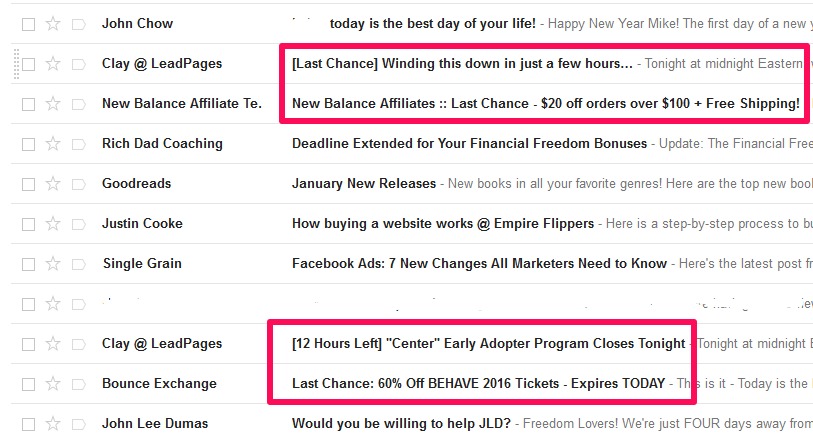
To enhance the effectiveness of your email marketing, consider structuring your email calendar to encompass a brief series of three emails centered around a specific promotion: an initial announcement, a follow-up reminder, and a concluding last-chance notification.
Relevance Content
Just like the email subject line should strive to establish relevance through personalization, so should the copy in the email’s message.
Again, it takes more than just a dynamic name tag for your email copy to convince readers that what’s inside is relevant to them. So use the very beginning of the email to explain how you know each other.
Below is an example of an email sent by 1-800-Contacts to a colleague of mine.
(By the way, the subject line was informative: “Get your contacts ordered before the weekend.”)
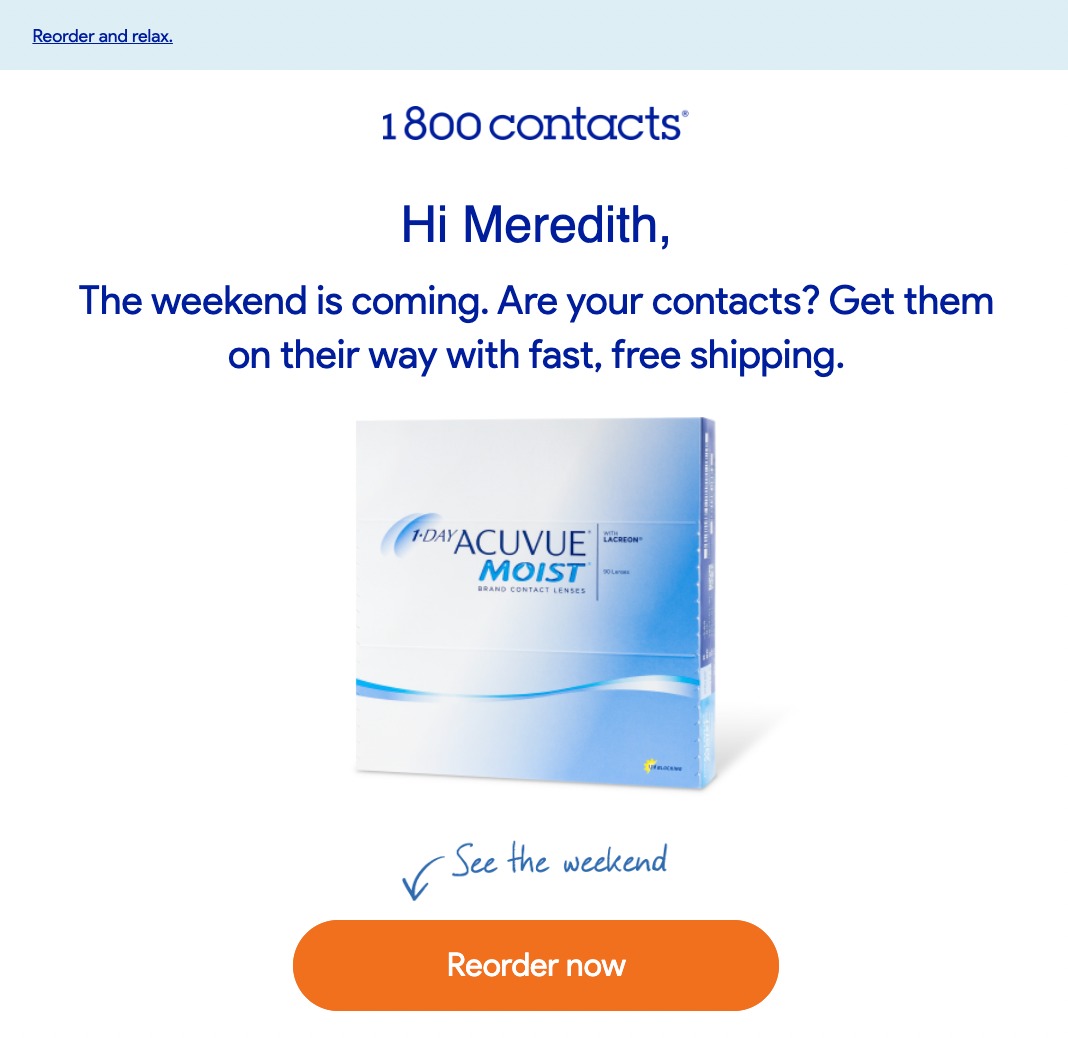
Write in the second person
Writing in the second person means using the pronouns “you,” “your,” and “yours.“ For example, ”Before you leave in the morning, remember to bring your jacket.” It means you orient the copy towards the reader, not yourself.
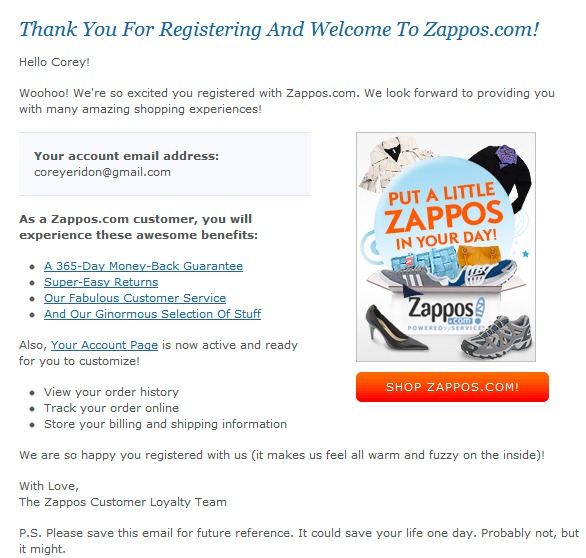
Take a look at the copy in this email from Zappos, for example: Now, count how many times this email says “You” instead of “we” or “I.”
Okay, okay, we won‘t make you count: The words “you” and “your” appear 12 times, while “we,” “our,” and “we’re” appear only five times.

